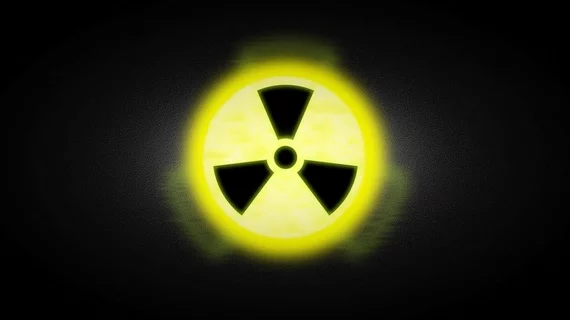A singular, high-dose beam of radiation could improve survival odds in patients with ventricular tachycardia (VT), many of whom are too sick to undergo conventional therapy, researchers reported at the American Society for Radiation Oncology (ASTRO) meeting in Chicago Sept. 15.
The radiation approach solves a host of problems for victims of VT, including reducing their risk for sudden cardiac death. While a more typical treatment approach might include implantable defibrillators or catheter ablation, those options are both invasive, and the latter is only effective in about half of patients.
Clifford G. Robinson, MD, and colleagues’ study focused on VT patients too sick to undergo more run-of-the-mill treatment. In a release, Robinson called radiation therapy the “last line of defense for these patients....who have run out of options."
Rather than take an invasive approach, the research team used electrocardiograms and computed tomography to locate and visualize the origin of a patient’s arrhythmia, using the 3D visual and electrical maps to guide radiation therapy. A single, high-dose beam of radiation—the same type used to treat cancer—is delivered directly to the site in question, usually within 10 minutes. No anesthesia or hospitalization is required, cutting costs, and patients can go home immediately following treatment.
Robinson et al.’s trial included 19 patients with VT who weren’t responding to other therapies. The researchers previously reported in 2017 that, six months after radiation therapy, those patients saw a 90% reduction in episodes of tachycardia and improved survival; now, two years later, Robinson’s team reports that reduction persisted in 80% of patients for at least two years following the singular treatment.
One-year survival in the cohort was 72%, and two-year survival was 52%. Nine patients died over the course of the study—six from cardiac causes and three from noncardiac causes, including amiodarone toxicity, cancer and an accident. Two patients who survived experienced inflammation of the heart lining and another developed a fistula between the stomach and heart, but all three incidents occurred more than two years after treatment.
“These numbers are encouraging given the condition of the patients, who are too sick to undergo any more catheter ablation procedures,” Robinson said. “Given the relative novelty of this treatment approach, we are continuing to follow our patients closely.”

